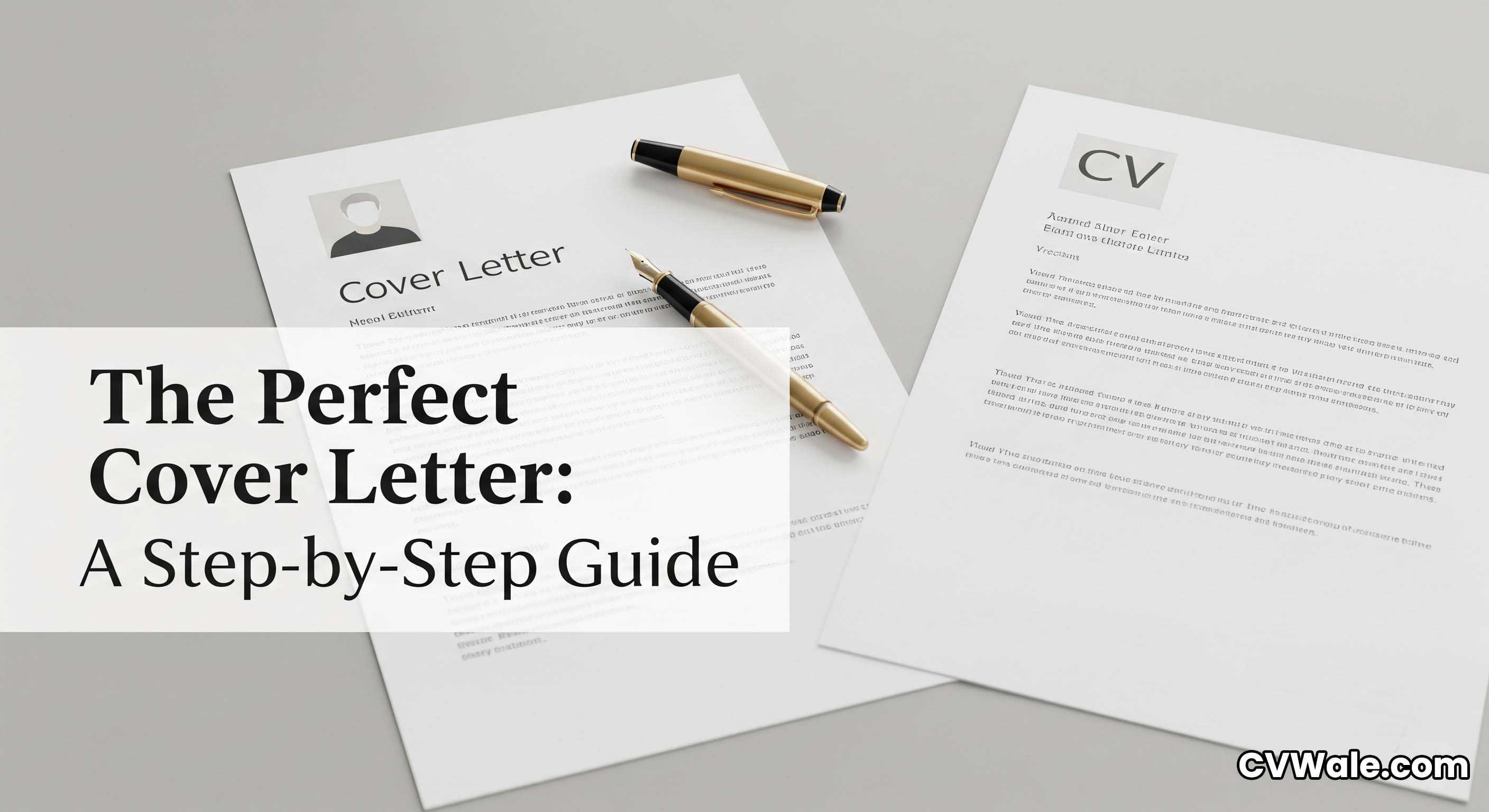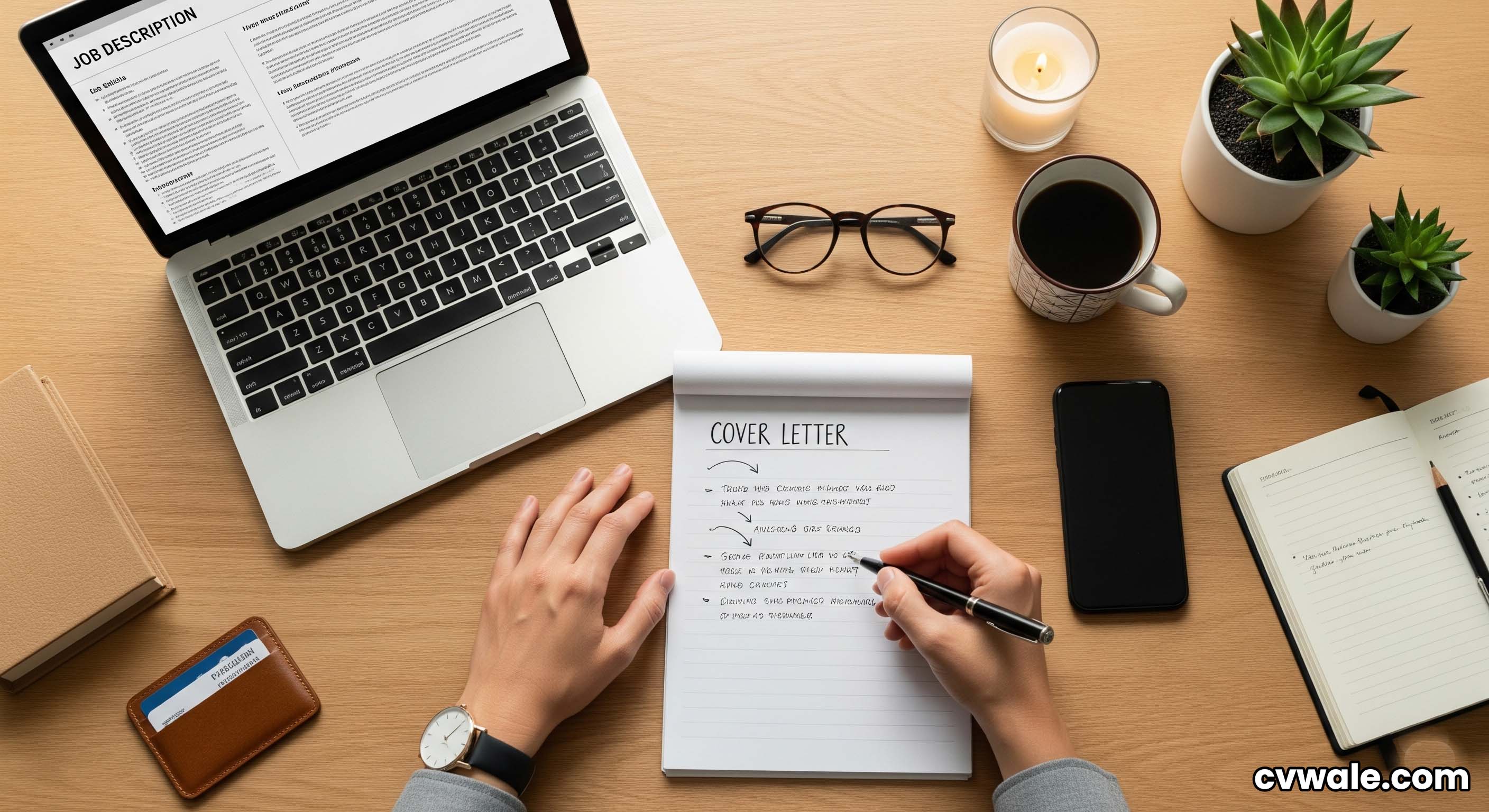How to Write the Perfect Cover Letter (A Step-by-Step Guide for 2025)

You've spent hours perfecting your CV using a tool like CVWale. It's clean, professional, and packed with your achievements. But in the job application portal, you see an optional field: "Upload Cover Letter." Should you skip it? Absolutely not. A cover letter is not just a formality; it's a powerful tool to set yourself apart from the competition. While your CV presents the "what" (your skills and experience), a cover letter explains the "why"—why you are passionate about this specific role and this particular company. In the Indian job market, where recruiters receive hundreds of applications for a single role, a compelling cover letter can be the personal touch that convinces them to give your CV a closer look. This step-by-step guide will teach you how to structure and write the perfect cover letter that complements your CV and grabs the recruiter's attention.
Step 1: The Header - Professional and Consistent
Your cover letter's header should be clean and professional, containing your essential contact information. Most importantly, it should match the header on your CV for consistent branding.
What to include:
- Your Full Name
- Your Phone Number
- Your Professional Email Address
- Your LinkedIn Profile URL
- Your City and State
Step 2: The Salutation - Personalize It!
Avoid the generic and lazy "To Whom It May Concern" or "Dear Sir/Madam." This shows a lack of effort. Take a few extra minutes to find the name of the hiring manager. This small detail can make a huge difference.
How to find the name:
- Check the job posting itself.
- Search for the company's "Head of [Department Name]" on LinkedIn.
- Look at the company's "Team" or "About Us" page on their website.
If you find the name, use a professional salutation like "Dear Mr. Patel," or "Dear Ms. Gupta,". If you absolutely cannot find a name, use a specific title, such as "Dear Hiring Manager," or "Dear [Department Name] Team,".

Step 3: The Opening Paragraph - The Hook
This is your first impression. Your opening paragraph must be strong and engaging. It should clearly state the position you are applying for and briefly explain your main qualification or enthusiasm for the role.
Weak Opening: "I am writing to apply for the Software Developer position I saw advertised on Naukri.com."
Strong Opening: "As a passionate software developer with over 5 years of experience in building scalable fintech applications, I was thrilled to see the opening for a Senior Developer at [Company Name]. My proven expertise in Java and cloud services aligns perfectly with the requirements of this role."
Step 4: The Body Paragraphs - The Core of Your Pitch
This is where you make your case. In 2-3 paragraphs, you need to connect your skills and experiences directly to the company's needs. Don't just repeat your CV; elaborate on it.
- Paragraph 1: Why You're the Perfect Fit for the Role. Pick the top 2-3 requirements from the job description. Then, provide a specific example from your past experience that demonstrates your ability in that area. Use the STAR method to structure your example.
- Paragraph 2: Why You Want to Work for *This* Company. This is crucial. Show that you've done your research. Mention something specific that attracts you to the company. It could be their company culture, a recent project, their mission, or their products. This proves your genuine interest.
Step 5: The Closing Paragraph - The Call to Action
End your letter on a confident and proactive note. Summarize your value, reiterate your enthusiasm, and suggest the next step, which is an interview.
Example Closing: "I am confident that my skills in project management and my passion for developing user-centric solutions would make me a valuable asset to your team. I have attached my CV for your review and I am eager to discuss my qualifications further in an interview. Thank you for your time and consideration."
Step 6: The Sign-Off - Professional and Clean
Use a professional closing, followed by your typed full name.
- Good choices: "Sincerely," "Best regards," "Yours faithfully,"
Sincerely,
[Your Full Name]
Final Tips for a Flawless Cover Letter
- Keep it to one page. A cover letter should be concise, ideally between 250-400 words.
- Proofread meticulously. Just like your CV, any spelling or grammar error can be a deal-breaker.
- Maintain a professional tone. Be enthusiastic but not overly casual.
- Save as a PDF. Name the file professionally, for example, "YourName-CoverLetter-[CompanyName].pdf".
A cover letter is your opportunity to tell your story and make a personal connection with the recruiter. First, build a strong and professional CV using CVWale, then pair it with a compelling, tailored cover letter using this guide to double your chances of success.
